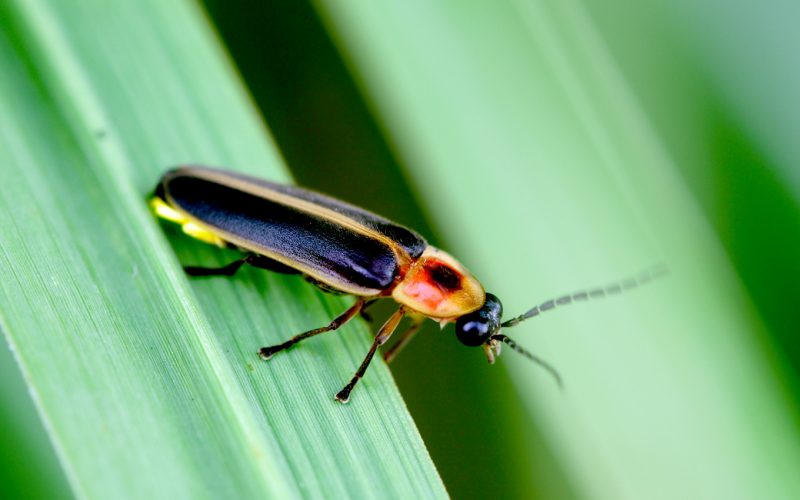
Courtesy Photo
Fireflies have dedicated light organs that are located under their abdomens. Each blinking pattern is an optical signal that helps fireflies find potential mates.
Across the backyards and fields of Northwest Arkansas, endangered shooting stars are illuminating the grass in Christmas-light patterns that herald summer and thunderstorms.
“Lighting Bugs,” as fireflies are known, possibly get their name due to their tendency to appear before a storm. On a clear night in a dark prairie, when fireflies gather in huge masses, it’s as though the observer were standing on a plane between two heavens, looking at the stars both above and below the horizon.
Fireflies are fascinating beetles with a surprising life cycle and behavioral adaptations. With about 150 species in the United States, there is a remarkable diversity in their glow despite the seemingly uniform color of their backyard twinkling. They could be blue-green, like the Blue Ghost firefly, greenish yellow, or even a bit orange, and blink in one spot or move in a pattern like the Big Dipper, a firefly who adopts the J-shape flight pattern. Some species blink for just twenty minutes a night, but others go on for several hours.
Females of certain species mimic the blinking call of a male of another species, attacking and eating him when he lands nearby to mate with her. In doing so, it’s believed that females acquire the poisonous chemicals produced only by males to protect themselves from being eaten by predators.
They have no teeth; instead, they catch food with their mandibles (jaws) and chew it with their maxillas. Some inject their prey with a substance that liquifies it, then suck up the juices to gain nourishment. Females can lay anywhere from 40 – 1,000 eggs depending on the species. Fireflies may spend over a year in their larval and pupa stages before transforming into an adult with two wing sets, one harder set in the back that protects their front flying wings. Their lifespan is variable as adults living from five days to two months.
According to National Geographic, “Fireflies have dedicated light organs that are located under their abdomens. Each blinking pattern is an optical signal that helps fireflies find potential mates. Scientists are not sure how the insects regulate this process to turn their lights on and off.” Several sources conflict regarding the exact chemical reaction that allows bio luminescence in fireflies, but in general: within the firefly’s abdominal organs, oxygen, luciferase, luciferin, and adenosine triphosphate (ATP) are combined to produce a glow without heat.
Steven Otfinoski writes in his book “Fireflies” that this chemical process can help humans via medical discoveries. “Luciferase is an enzyme that can be injected into cells of cancer patients and people with multiple sclerosis, cystic fibrosis, AIDS and heart disease to detect changes in these cells that may help find a cure.” Because of their beauty and benefit to human health, it would be terrible to lose these lightful creatures, some of which are endangered. Learn how to help in your own backyard by going online to visit “Firefly Watch” run by the Museum of Science in Boston.
Amanda Bancroft is a writer, artist, and naturalist building an off-grid cottage for land conservation on Mt. Kessler. She and her husband Ryan blog about their adventures and offer a solar-hosted online educational center on how to make a difference with everyday choices at: www.RipplesBlog.org.










